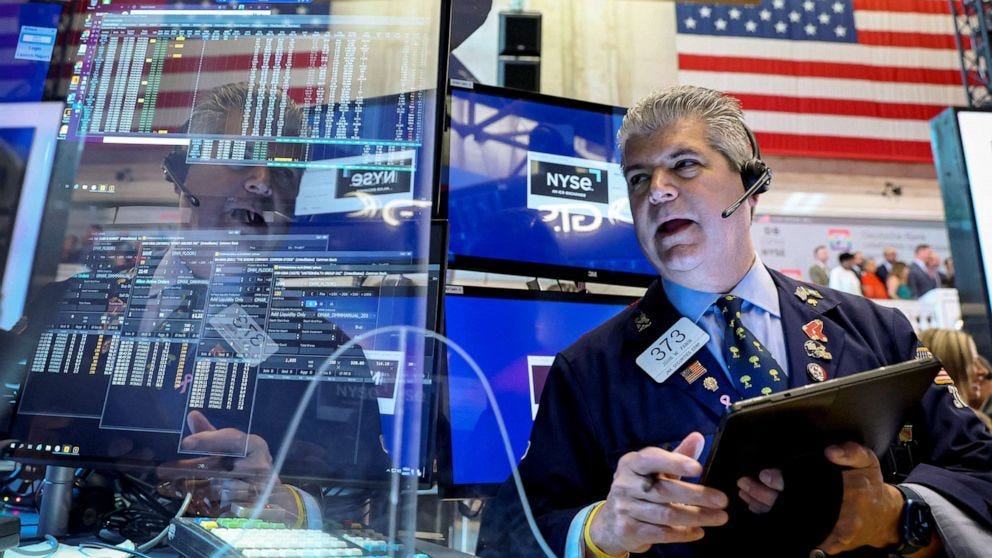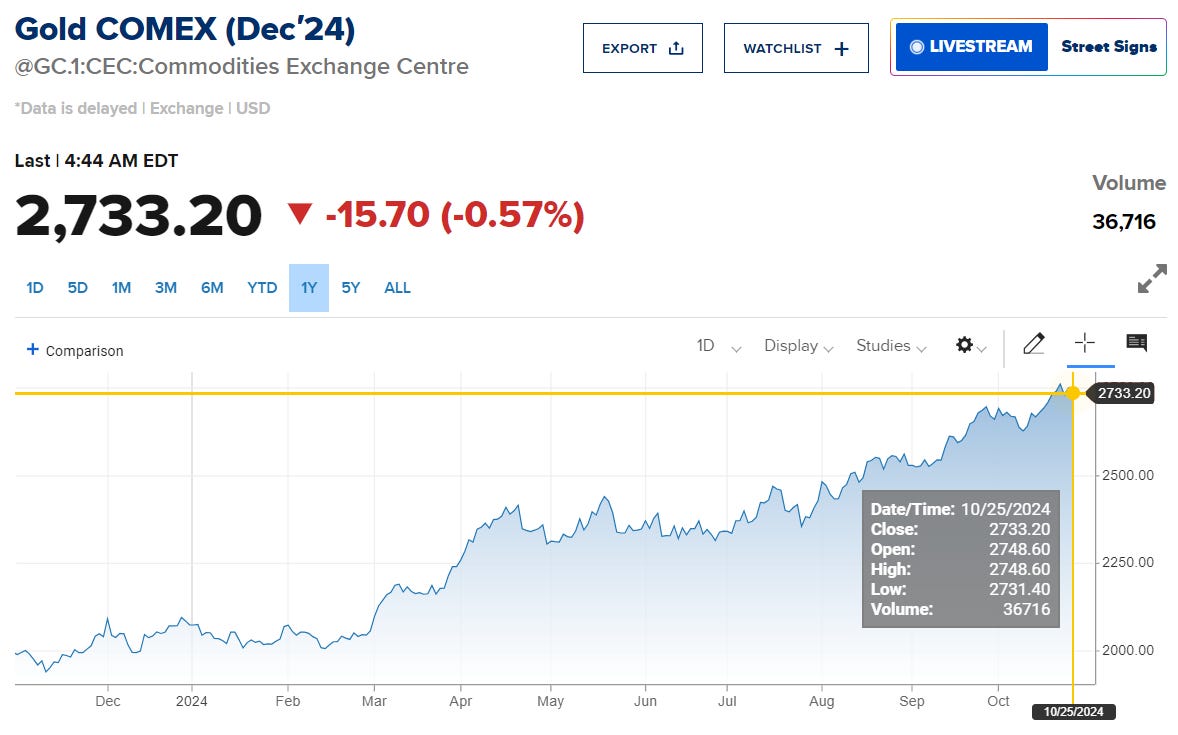
Gold has entered what analysts are calling a “new bullish phase,” spurred by increasing central bank purchases, rising U.S. debt levels, and a potential peak in the dollar. Prices surged to a record high on Monday, with asset management firm Sprott Asset Management and other financial analysts suggesting that gold’s upward momentum is far from over.
“Gold has entered a new bullish phase,” noted Paul Wong, market strategist at Sprott, after prices hit a fresh high of $2,700 per ounce. He attributed the surge to several macroeconomic factors, including central banks’ increased buying and heightened concerns over the U.S. debt-to-GDP ratio. “Historically, higher debt ratios lead to greater interest in gold due to worries about currency devaluation and potential debt monetization,” Wong added.
Spot gold is currently trading at $2,729.14 per ounce, with futures slightly higher at $2,741.20. The Congressional Budget Office projects that U.S. public debt will climb from 98% of GDP in 2023 to an unprecedented 181% by 2053, fueling concerns over the currency’s long-term stability and increasing gold’s appeal as a stable asset.
The World Gold Council reports a 5% increase in central bank gold purchases in the first half of 2024, totaling 483 tons and surpassing the previous record set last year. Meanwhile, a growing number of analysts, including Bank of America’s Michael Widmer, believe gold is well-positioned to reach $3,000 in the coming months, with many forecasting a leap to $2,800 within the quarter.
“Gold looks better now than it has in years,” said Widmer. “High levels of government debt and geopolitical risks reinforce the case for gold to climb even higher.”
Global tensions, particularly in the Middle East, have further intensified gold demand. As conflict persists between Israel and militant groups in Gaza and Lebanon, investors are gravitating toward gold to safeguard against geopolitical risks and potential market volatility.
Citi analysts project that gold could breach $3,000 within six to nine months, particularly if oil prices rise due to Middle East unrest. Citi’s recent forecast also set gold’s short-term target at $2,800, citing high demand despite a dip in retail interest from China.
The Commonwealth Bank of Australia’s Vivek Dhar has forecast gold averaging $3,000 by the fourth quarter of next year, with a $2,800 average expected for the current quarter. Dhar highlighted the influence of a weaker U.S. dollar, which has historically benefited gold prices by making it more affordable for foreign buyers.
With economic and geopolitical uncertainties persisting, gold’s allure as a hedge against inflation and instability remains compelling. The metal’s bullish trajectory has captured attention worldwide, as analysts continue to revise upward their expectations for its value, suggesting that new all-time highs could be just around the corner.



























